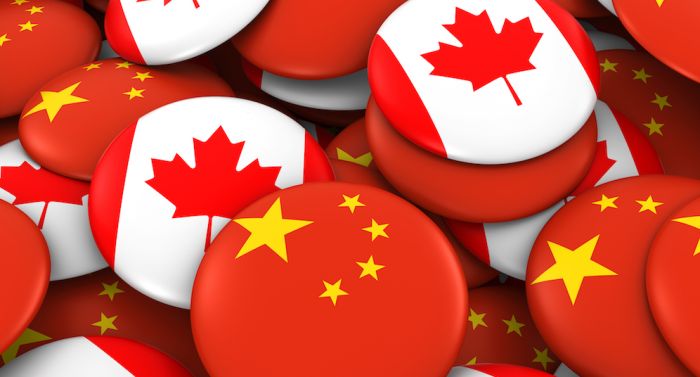In response to the changing landscape of economic opportunity, the Canadian government is currently exploring greater economic integration with China in the form of a free trade agreement (FTA). Negotiating such a deal will be challenging given the complexity of the issues at hand and the need to secure Canadian public support for closer economic ties.
If the Canadian government begins FTA negotiations with China, it needs to take into account not only the political, economic, and social forces that are transforming the world we live in today, but also those that will shape the world we will live in tomorrow.
Here are eight considerations the Canadian government may want to explore as it moves forward in its conversations with China.
1. COMMENCE NEGOTIATIONS:
Given the economic complementarities between Canada and China’s economies, as well as China’s continued economic growth trajectory, beginning negotiations on a Canada-China FTA (CCFTA) is a must for the Canadian government. An FTA with China is not only about securing greater preferential access to the world’s second-largest economy, but also enhancing Canada’s trade diversification.
2. LEARN FROM PREVIOUS FTAS:
Canada and China’s previous FTAs will form the basis to frame negotiations and targets to achieve in a CCFTA. While it is important for Canada to push for Trans-Pacific Partnership (TPP)-level and China-Australia FTA (ChAFTA)+ standards, Canadian negotiators must also be pragmatic about the degree of liberalization China’s government is willing to undertake in the next decade. drawing from experiences from previous FTAs, Canada can push for more ambitious services access, as well as better provisions on intellectual property and SOEs that complement China’s ambitious domestic policies for greater IPR and SOE reform.
3. CONSIDER SECTOR-SPECIFIC ARRANGEMENTS:
Through negotiating sector-specific arrangements prior to focusing on a comprehensive formal FTA, the Canadian government can address trade irritants not necessarily covered in an FTA. Sectors that would immediately benefit from increased trade should be given priority, such as clean technology and certain natural-resource-based industries.
4. PUSH FOR GREATER PEOPLE FLOWS:
In terms of the temporary entry of businesspersons, it would be beneficial to Canada to expand the categories of skilled workers in ChAFTA to reflect the reality of skilled work professions and jobs today. A ChAFTA-like MOU that facilitates the temporary entry of labour for large infrastructure projects should only be implemented if companies meet Canadian standards in labour market testing practices and wages. Negotiating a reciprocal “working holiday” program parallel to an FTA should also be considered.
5. CONSIDER REGULATORY RECIPROCITY:
A CCFTA has the potential to be a unique trade agreement for Canada. As a result, novel mechanisms of implementation should be considered. If negotiators believe China would not follow up on its commitments, Canada could use a form of regulatory reciprocity to phase out tariffs or other barriers to trade based on whether each party has successfully implemented its previous commitments. This could be used in place of a tariff schedule or in addition to a schedule to ensure that both parties are held accountable to the agreement.
6. PLAN FOR THE FUTURE:
A negotiation for an FTA with China will take considerable time to negotiate and will possibly only be fully implemented decades after the agreement enters into force. Trends in demographics, meanwhile, present opportunities in China’s health-care economy that Canada will benefit from through securing greater preferential access to the market now. Although trade between Canada and China in emerging technologies such as biotechnology, robotics, AI, and ICT may be still nascent, a CCFTA provides a platform for greater collaboration in establishing norms of trade in these goods.
7. IMPROVE INVESTOR STATE DISPUTE SETTLEMENT (ISDS):
One of the major criticisms of the Canada-China Foreign Investment Promotion and Protection Agreement, and of bilateral investment treaties in general, is their use of ISDS.
An investment chapter within a CCFTA should include improved ISDS provisions that allow governments the right to regulate, especially when it comes to: favouring public policy welfare objectives; instituting penalties for frivolous claims to reduce unnecessary burden on the government; increasing transparency by making filing documents, witness expert testimonies, amicus briefs, and final dispute settlement decisions publicly available; and, creating a standing database of ISDS arbitrators who can serve as arbitrators for disputes but who cannot serve as legal counsel in such disputes, thereby eliminating the conflict of interest.
8. ADDRESS NON-TRADE ISSUES:
While collaboration on non-trade issues like human rights, cybersecurity, and environmental protection is not extensively covered in FTAs, they remain key issues that the Canadian people want to see addressed in forming deeper relations with China. Through forming a strategic partnership agreement similar to the one conceived on the margins of Canada-European Union Comprehensive Economic and Trade Agreement (CETA), Canada can pursue greater co-operation on issues such as international peace and security, counterterrorism, human rights, clean energy and climate change, migration, sustainable development, and innovation. In respect to human rights specifically, Canada should reinstate its bilateral dialogues with China. Such a forum will provide both countries the opportunity to remind each other of their international obligations on human rights standards.




